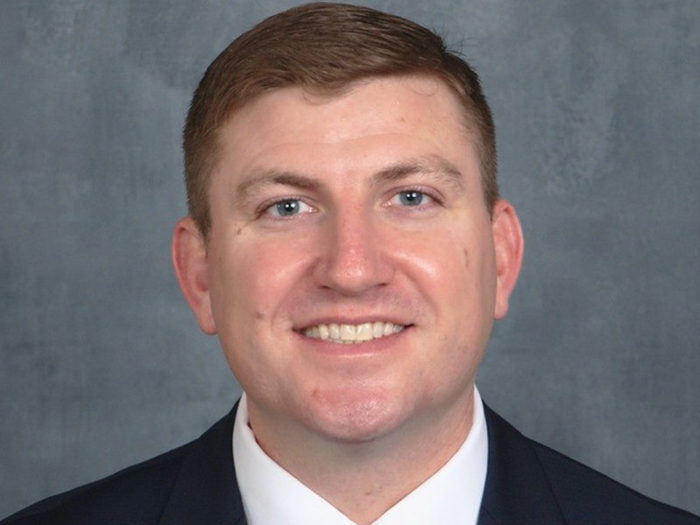A Decade in Review: Rising Medical Solutions’ Latest Benchmarking Study Highlights the Evolution of Workers’ Comp

A lot has changed in the past 10 years.
We survived a pandemic. More and more states have legalized marijuana for either medical or recreational consumption. Smartphones have gone from being a luxury to a commonplace technology.
With so much changing, it’s natural for workers’ compensation to take a step back and ask: How has our industry evolved over the last decade? The Rising Workers’ Compensation Benchmarking Study tries to answer that question.
This year, in celebration of the study’s 10-year anniversary, the report offers an industry report card of sorts. It examines how the industry has progressed by using the same questions and comparing results from surveys conducted in 2017 and 2014.
The findings? The industry is increasingly embracing technology and advocacy models of care. It continues to struggle with talent shortages, and claims resolution is a higher priority for industry leaders than it was in years past. Here are four key takeaways.
1) Medical Management: Improving Claims Outcomes, No Matter the Measure
Survey participants have ranked medical management as one of the top three core competencies critical to driving good claims outcomes since the study began in 2013. Return-to-work, another crucial measure of claims performance, is also consistently among the top three.
The fact that claims leaders consistently recognize these two factors as crucial to driving good claims outcomes is an indicator of just how prevalent the injured worker advocacy model has become in the industry. Since the study’s inception in 2013, they’ve tracked the growth of advocacy based claims models. This year, 88% of high-performing payers, defined as those with a claims closure ration of 101% or higher, reported knowledge of advocacy models.
“We’ve seen an improvement in organizations understanding the value of advocacy,” said Denise Zoe Algire, director of health with Albertsons Companies, and the study’s principal researcher and report author.
“We’re using active listening skills, recognizing the individual’s point of view and understanding where they’re coming from, and being able to explain the process in a way that is sensitive to that.”
For the first time in the study’s life, claims leaders ranked claims resolution as one of the top three core competencies. Algire doesn’t see this as a departure from advocacy models, however. Rather, she sees claims closure, medical management and quality care for injured workers as being interconnected.
“Claims resolution is good for the company, but it’s also good for the worker,” she said. “Most people find a great identification in their work and so being away from work has both financial and tremendous mental health impacts.”
On the medical management end, claims organizations are ensuring injured workers receive the best available treatment via provider performance measures, like return-to-work rates and whether a physician uses evidence-based treatments. Sixty-four percent of survey participants said that their organization tracks provider performance on some level.
“Measuring provider performance and outcomes is fundamental to improving the value and quality of care for injured workers,” said Dr. Adam Seidner, chief medical officer with The Hartford.
“Understanding and addressing social determinants of health is important because it can predict a good or bad outcome of a claim. … Given the undetected impact of SDOH on injured worker outcomes, this remains a significant opportunity for claims organizations.”
2) Mental Health Awareness in Claims Is Increasing
An extension of medical management, addressing mental health issues before they negatively impact claims is becoming paramount to many in the industry. This year, the survey included two questions on mental health for the first time as a response to a growing awareness of these conditions.
“Since the pandemic, particularly, there has been an increased focus on the impact of mental and behavioral health on overall wellbeing as well as claims outcomes,” Algire said. “These factors have a tremendous impact on one’s overall wellbeing as well as claim outcomes.”
The study found that 55% of claims organizations have programs in place to identify mental health issues that may affect a claim, and 51% are taking action to address those issues.
“This study and other research show mental and behavioral health conditions that occur along with a physical injury or illness can lead to longer recovery durations and higher claim costs,” Seidner said.
3) Claims Talent Remains a Major Concern
It’s becoming impossible to survey industry leaders within workers’ compensation without the talent crisis coming up. Organizations of all sizes are struggling to attract and retain workers. The study notes that Bureau of Labor Statistics data shows that the percentage of insurance professionals over 55 has increased by 77% over the last ten years.
As a result of these talent challenges, 77% of claims leaders surveyed said their organization changed their operational model due to employee sentiment. Claims leaders may be thinking if they adapt business models to suit employee preferences, then they can prevent their workers from looking elsewhere for employment.
“The historical results show that attrition at the frontline claims professional level is increasing,” Seidner said. “Claims organizations … have the opportunity to transform the image of the claims profession and claim professional, which would assist with retention.”
The Workers’ Compensation Benchmarking Study has long centered claims talent and the industry’s need to recruit new workers within its research. The 2019 study sought to understand the perspectives of frontline claims professionals — their caseloads, their priorities for claims, whether they’re familiar with advocacy models.
The findings offer valuable insights into how the leaders of claims organizations can attract new employees to their companies.
“I think organizations realize that claims talent is a critical component to their success,” Algire said. “There have been improvements in several areas in terms of focusing on training, expanding training to include soft skills, there’s still work that we need to do, but we’re seeing traction, in terms of organizations investing in those critical components of training.”
4) Technology Use Is Proliferating. Let’s Use it Productively
The survey found that claims leaders continue to be focused on implementing new technologies. Fifty-six percent said they are increasing investment in IT resources in order to integrate their tech systems, up from 45% in 2017 and 49% in 2014.
“There is so much buzz around AI and technology,” Algire said. “I think we have to step back and say how are we using it to drive operational improvements.
“The industry is technology rich. There is a tremendous amount of data, both structured and unstructured, within claims organizations. So how do we leverage that data?” Algire added.
The industry is increasingly turning to technology to automate tasks and reduce workloads as the industry struggles to manage worker shortages. Forty-seven percent of claims leaders reported using tech to offload administrative tasks, and 55% said they’re using it to automate portions of an adjuster’s workload.
Seidner sees plenty of opportunities for claims professionals to use technology to drive better outcomes and improve operational efficiencies. “Technology, such as A.I., is being used to help identify claimants at risk for delayed recovery and alerting the claim professional, who can then take key steps to better support the claimant’s healing,” he said.
“Aligning incentives for all the interested entities is critical, and the focus should be on what is best for the injured worker. This includes focusing on patients accessing care as well as decreasing administrative burden through fast tracking payments and decreasing utilization review requirements.” &










